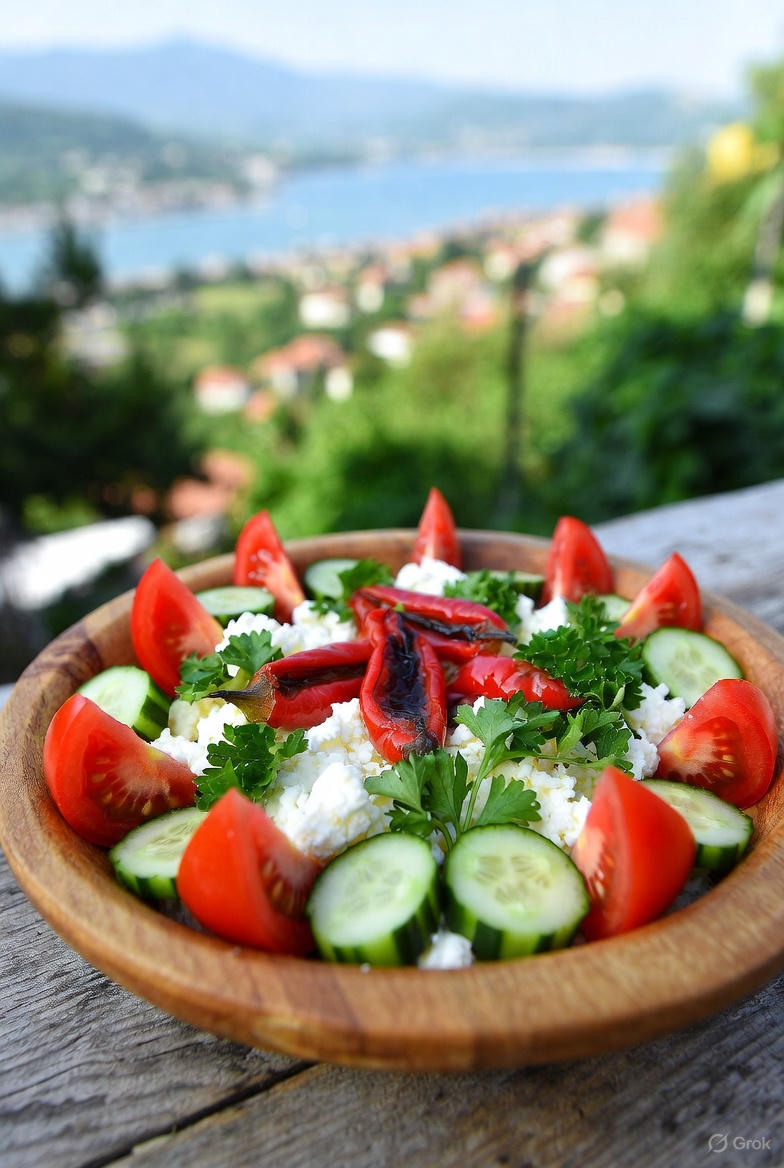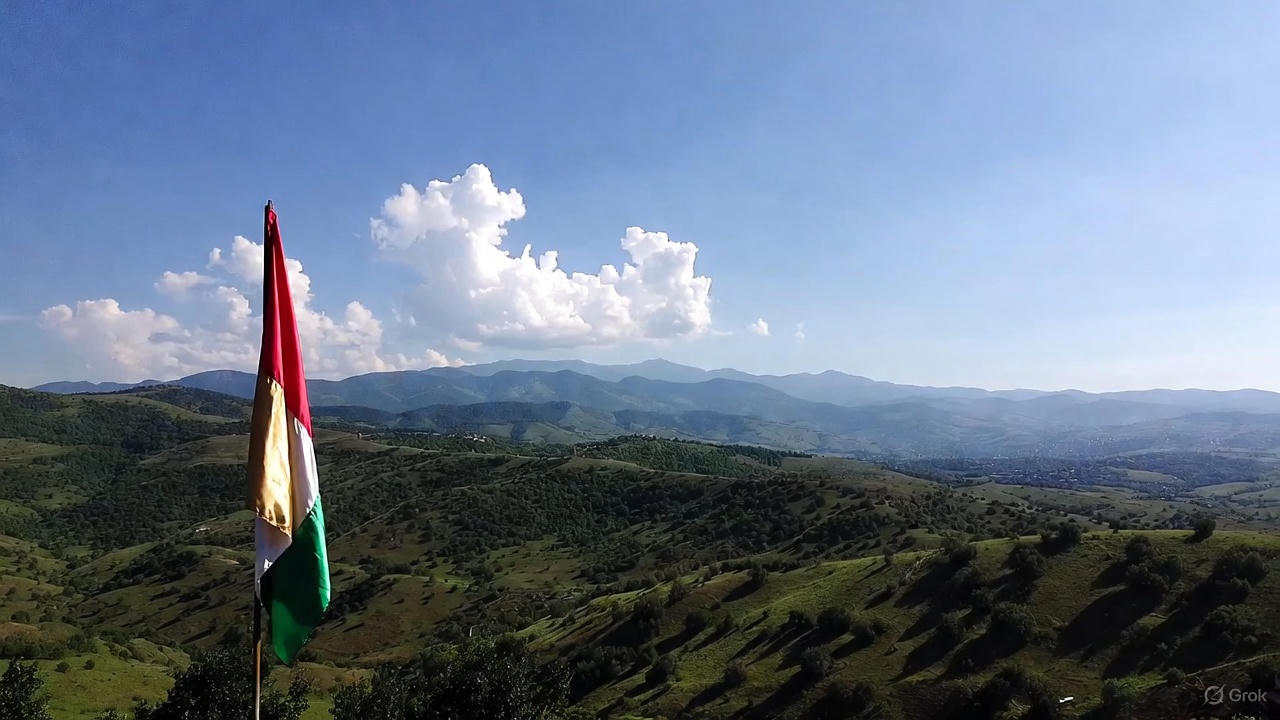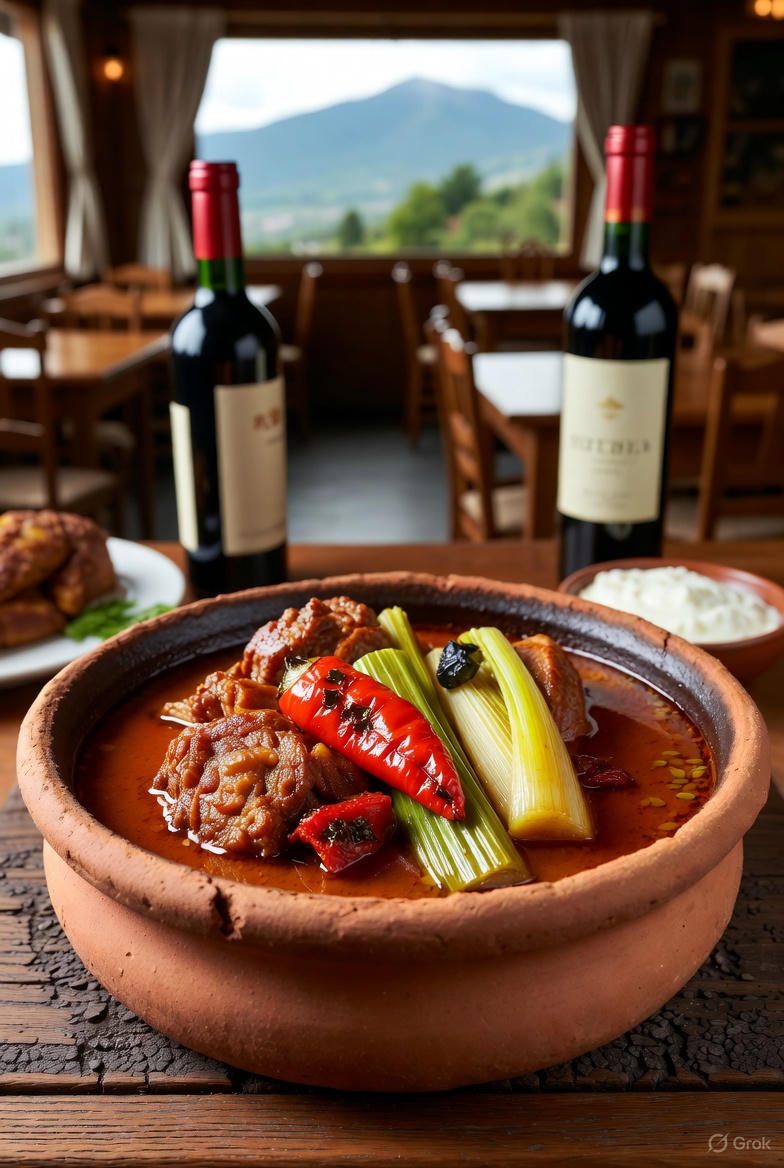Shopska Salad: The Tricolour That Became Bulgaria’s National Symbol

If banitsa is the warm, comforting hug of Bulgarian cuisine, Shopska salad is its bright, sun-drenched smile. With its vivid stripes of red tomatoes, green cucumbers, snowy white sirenje cheese, and a dusting of roasted red peppers or fresh parsley, this salad is the living flag of Bulgaria on every table. It is served before almost every meal, appears in every roadside mehana, and is the one dish that Bulgarians will fiercely defend as “ours” – even though the neighbours make almost identical versions.
The Surprisingly Young History of a National Icon
Shopska salad was invented in 1955–1956, making it younger than most people’s grandmothers.
The story begins at the state tourist agency Balkanturist, which was desperate to create distinctive “national” dishes for the new socialist-era resorts along the Black Sea coast (Druzhba, Golden Sands, Sunny Beach). The chefs at the Chernomorets restaurant in Varna were tasked with designing something fresh, colourful, and unmistakably Bulgarian that foreign tourists could easily recognise and order.
They took the classic summer village salad of the Shopi people (an ethnographic group living around Sofia, Dragoman, and Tran) and gave it a dramatic makeover:
- Tomatoes and cucumbers were cut into perfect cubes instead of rough chunks.
- The white sirenje was grated into fluffy snow rather than crumbled.
- Roasted red peppers were added for sweetness and extra red colour.
- A generous final shower of finely grated cheese created the white stripe that made the dish resemble the Bulgarian flag (white, green, red).
The new creation was named “Shopska” to honour the cheerful, loud-singing Shopi and their traditional embroidered costumes. Within a few years it had conquered the entire country. By the 1970s it was impossible to enter a restaurant without seeing it on the menu, and by the 1980s even the smallest village tavern served it in enormous wooden bowls.
In 1972, the salad achieved international diplomatic fame when a Yugoslav journalist jokingly asked a Bulgarian delegation why their salad looked like the Bulgarian flag. The answer came instantly: “Because it is the tastiest one!” The anecdote made headlines and cemented Shopska’s status forever.
Today it is recognised by the European Union as a “Traditional Speciality Guaranteed” under the Bulgarian name Шопска салата.

The Authentic Shopska Salad – The Way a Sofia Grandmother Would Make It in August
Serves 4–6 as a generous starter Preparation time: 15 minutes (no cooking required)
Ingredients – only the best summer produce allowed
- 600–700 g ripe, flavourful tomatoes (preferably the pinkish “kaba-kaba” or “kurdiska” varieties grown around Pazardzhik and Plovdiv – if unavailable, use the best vine-ripened tomatoes you can find)
- 300–350 g crisp cucumbers (the short, knobbly “Gergana” type traditionally used; standard cucumbers are fine if you peel them in stripes)
- 1 large green bell pepper (or 2–3 mild light-green “Kurtovska kapia” peppers if you can source them)
- 1 medium red onion (or 3–4 fresh spring onions with greens – regional preference)
- 1–2 roasted red peppers (preferably home-roasted and peeled “kapia” peppers preserved in jars; the smoky-sweet Bulgarian kind, not the sour vinegar ones)
- 250–300 g authentic Bulgarian sirenje (aged at least 45 days in brine – it should be salty and slightly crumbly but still creamy; Greek feta or Serbian sirenje are acceptable substitutes, never use Danish “feta”)
- 3–4 tbsp sunflower oil (cold-pressed, unrefined – the golden Bulgarian kind that smells like sunflower seeds)
- 1–2 tbsp good red wine vinegar (or to taste – many grandmothers use homemade grape vinegar)
- A small handful of flat-leaf parsley, finely chopped (optional but traditional in western Bulgaria)
- Optional summer extras that cause endless arguments:
- A few black olives (Rhodope style)
- A hot green pepper on the side (Dobian style)
- A pinch of summer savory (chubritsa) sprinkled at the end (controversial – some say it belongs only in mish-mash)
The Non-Negotiable Rules Before You Start
- All vegetables must be at room temperature – never cold from the fridge.
- Tomatoes must be fully ripe and juicy; pale supermarket tomatoes are a crime.
- The sirenje is grated only at the very last second and never mixed in – it must sit proudly on top like fresh snow.
Method – Step by Step
- Roast the peppers (if doing it yourself) Char whole red kapia peppers over an open flame or under a grill until black. Place in a bowl, cover 10 minutes, then peel and remove seeds. Cut into thin strips. Many Bulgarian homes keep jars of these ready all year.
- Prepare the vegetables Dice tomatoes into 1–1.5 cm cubes, letting the juice collect in the bowl – that juice is liquid gold. Peel cucumbers in alternating stripes (for beauty) and dice the same size as tomatoes. Core and finely dice the raw green pepper. Slice the red onion paper-thin (or chop spring onions with plenty of green part).
- Assemble the base In a large, shallow wooden or ceramic bowl (traditional “lachenik”), combine tomatoes, cucumbers, green pepper, and onion. Add the strips of roasted red pepper on top. Do not mix yet.
- Season Drizzle sunflower oil generously over everything. Add vinegar sparingly – you can always add more at the table. Sprinkle a good pinch of salt. Now gently turn the salad 3–4 times with your hands or two forks. The goal is to coat everything lightly without crushing the tomatoes.
- The crowning moment Just before serving, take a large block of sirenje and grate it directly over the salad in a thick, even layer using the coarse side of a box grater. The cheese must fall like snow and cover almost everything underneath – this is non-negotiable.
- Final flourish Scatter chopped parsley over the white cheese mountain. Some regions add a single hot green pepper on top as decoration (and warning).
Serving
Place the entire bowl in the centre of the table with a bottle of rakiya or mastika nearby. Everyone serves themselves, usually with a chunk of warm homemade bread to mop up the juices. Shopska is always eaten first, before the grilled meats arrive, and the bowl is usually refilled at least once.
Regional Variations That Start Friendly Debates
- Sofia & the Shopi region: only sirenje, no parsley, no olives, lots of onion
- Black Sea coast: often includes black olives and sometimes grated hard-boiled egg
- Plovdiv & Thrace: heavier on roasted peppers and a touch sweeter tomatoes
- Pirin Macedonia: sometimes a spoon of crumbled shopska cheese mixed with finely chopped hot peppers as a side lyutika
Why It Works So Perfectly
The magic is in the balance: the sweetness of sun-ripened tomatoes, the crunch of cucumber, the smoky depth of roasted peppers, the sharp saltiness of sirenje, and the fruity grassiness of cold-pressed sunflower oil. It is summer on a plate – light yet satisfying, colourful yet simple, and impossible to dislike.
Every August, when the first pink tomatoes appear in the markets, Bulgarian social media explodes with photographs captioned simply “Започна се!” (“It’s begun!”). That is the moment the country knows the real Shopska season has arrived.
So next time you raise a glass of rakiya in a Bulgarian mehana and the waiter places a mountain of red, green, and white in front of you, remember: you are not just eating a salad. You are tasting sixty years of national pride, socialist tourism ingenuity, and the unbeatable flavour of a Balkan summer.
Nazdrave – and don’t forget to scrape the last of the sirenje from the bottom of the bowl!









